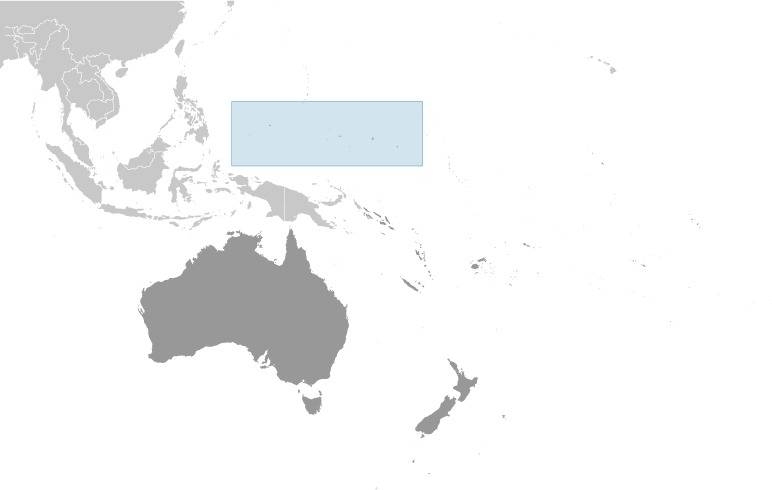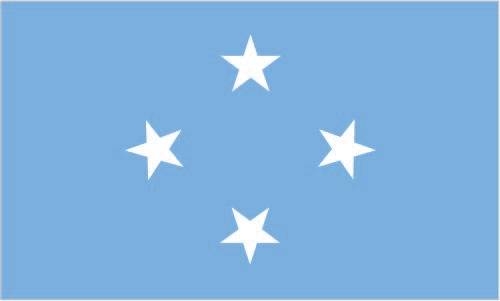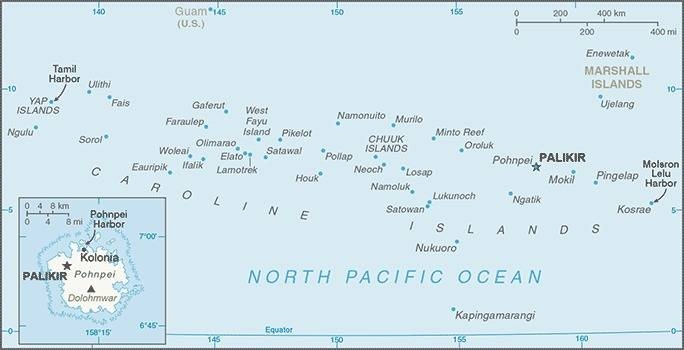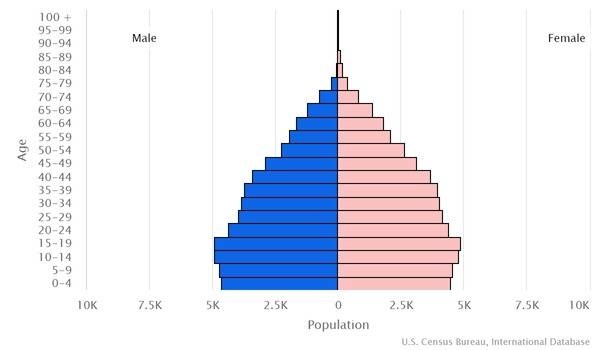Country Summary




Introduction
Background
The Caroline Islands are a widely scattered archipelago in the western Pacific Ocean. They became part of a UN Trust Territory under US administration following World War II. The eastern four island groups adopted a constitution in 1979 and chose to become the Federated States of Micronesia in free association with the US. Eligible Micronesians can live, work, and study in any part of the US and its territories without a visa.
Geography
Area
total: 702 sq km
land: 702 sq km
water: 0 sq km
Climate
tropical; heavy year-round rainfall, especially in the eastern islands; located on southern edge of the typhoon belt with occasionally severe damage
Natural resources
timber, marine products, deep-seabed minerals, phosphate
People and Society
Population
101,009 (2022 est.)
Ethnic groups
Chuukese/Mortlockese 49.3%, Pohnpeian 29.8%, Kosraean 6.3%, Yapese 5.7%, Yap outer islanders 5.1%, Polynesian 1.6%, Asian 1.4%, other 0.8% (2010 est.)
Languages
English (official and common language), Chuukese, Kosrean, Pohnpeian, Yapese, Ulithian, Woleaian, Nukuoro, Kapingamarangi
Religions
Roman Catholic 54.7%, Protestant 41.1% (includes Congregational 38.5%, Baptist 1.1%, Seventh Day Adventist 0.8%, Assembly of God 0.7%), Church of Jesus Christ 1.5%, other 1.9%, none 0.7%, unspecified 0.1% (2010 est.)
Population growth rate
-0.67% (2022 est.)
Government
Government type
federal republic in free association with the US
Capital
name: Palikir
Executive branch
chief of state: President David W. PANUELO (since 11 May 2019); Vice President Yosiwo P. GEORGE (since 11 May 2015); note - the president is both chief of state and head of government
head of government: President David W. PANUELO (since 11 May 2019); Vice President Yosiwo P. GEORGE (since 11 May 2015)
Legislative branch
description: unicameral Congress (14 seats; 10 members directly elected in single-seat constituencies by simple majority vote to serve 2-year terms and 4 at- large members directly elected from each of the 4 states by proportional representation vote to serve 4-year terms)
Economy
Economic overview
lower middle-income Pacific island economy; US aid reliance, sunsetting in 2024; low entrepreneurship; mostly fishing and farming; US dollar user; no patent laws; tourism remains underdeveloped; significant corruption
Real GDP (purchasing power parity)
$390 million (2019 est.)
Real GDP per capita
$3,500 (2019 est.)
Agricultural products
coconuts, cassava, vegetables, sweet potatoes, bananas, pork, plantains, fruit, eggs, beef
Industries
tourism, construction; specialized aquaculture, craft items (shell and wood)
Exports
$88.3 million (2013 est.)
Exports - partners
Thailand 73%, Japan 10%, China 9% (2019)
Exports - commodities
fish and fish products, coral/shells, scrap metals, mollusks, office machinery/parts (2019)
Imports
$167.8 million (2015 est.)
Imports - partners
United States 32%, China 16%, Japan 14%, Taiwan 9%, Philippines 6%, South Korea 6% (2019)
Imports - commodities
poultry meats, netting, broadcasting equipment, various meats, fish products (2019)
Page last updated: Wednesday, May 11, 2022
